
Summer Impressions
Summer has slowly but surely come to our ashram. Here the seasons are a bit different than in Europe so our summer time actually corresponds to the late spring in Europe.
In Rajasthan the summer season is called garmi or grishma ritu and it lasts from April till June. This period is characterised by very dry, hot weather with temperatures above 40°C, sometimes even above 45°C. During the day, the hot dry wind, called loo, blows from the west which leaves a sensation of the air from a hair dryer. Morning is the most refreshing part of the day and the only time when temperatures may go below 30°C. Sand storms are quite common in this period.
To avoid heat exhaustion and heatstroke, it is necessary to adjust the lifestyle according to these extreme weather conditions, which includes more liquid intake, change of the diet, application of oil into the nostrils, accepting and respecting our limited abilities due to heat etc. Yogic science says that the early morning time of brahmamuhurta is the most auspicious time for spiritual practice – during summer it becomes essential to get up early and use the benefits of the coolest period of the day. Most of all, we need to adopt a certain mental attitude to heat, as our Gurudev usually advises: “Think cool!”
Hanuman Jayanti
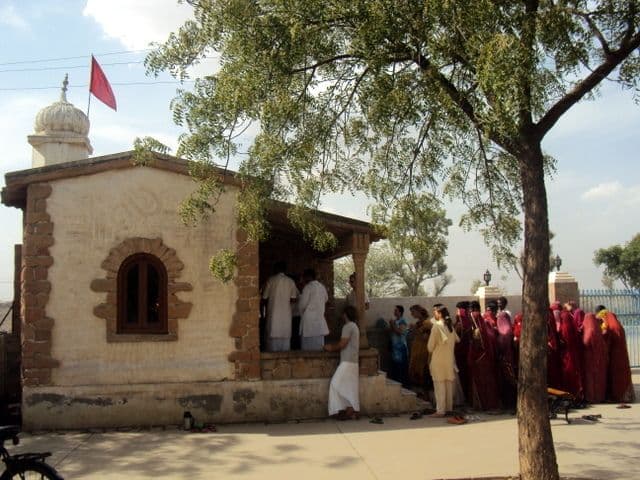

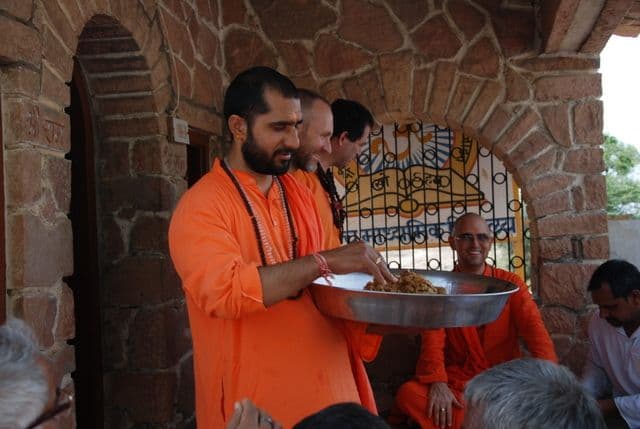
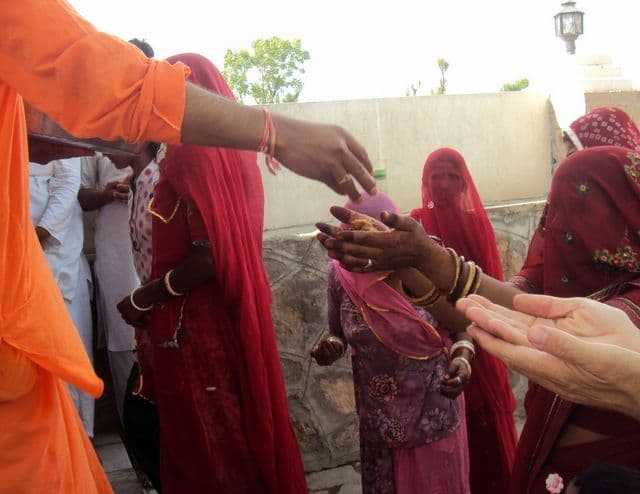
On April 25th we celebrated Hanuman Jayanti – birthday of Hanumanji. Traditionally, a huge, thick chapatti called rot enriched with gur and oil is prepared for Hanumanji's birthday – a rich, powerful food to match Hanumanji's strength and appetite. This was offered during the puja in Hanumanji's temple at the ashram's main entrance gate while gathered devotees sang Hanuman Chalisa. Many visitors that came specially for this occasion crowded in front of the temple to receive prashad.
Visit of Rajasthani folk dancers
On that auspicious day of Chaitra Purnima we also had an opportunity to enjoy the performance of folk dancers from the village of Kulthana. They performed a famous Rajasthani gair dance characterized by moving in a big circle while beating wooden sticks to create the rhythm. The vigour and joy of the dance spread through the ashram.

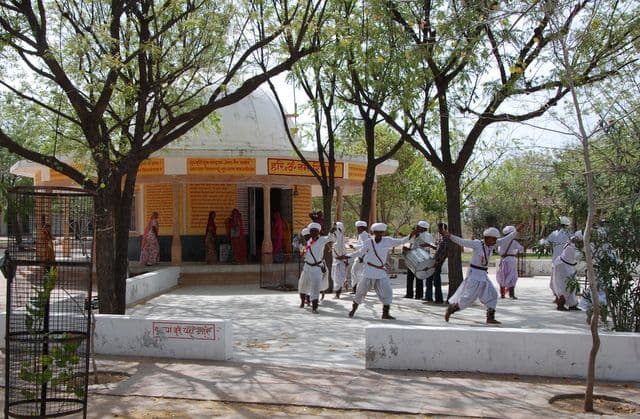

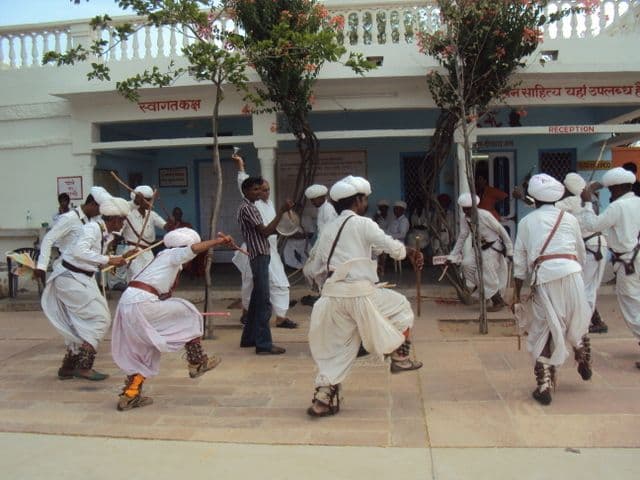
Satsang series on Patanjali's Yoga Sutras
Every evening ashram residents gather in Bhakti Sagar hall for Guru Arati and satsang with the singing of bhajans. As school students are on holidays, only yoga students remained in campus. We decided to use the peaceful time of summer holidays to enrich our learning program by daily research of Patanjali's Yoga Sutras. With the help of Mahamandaleshwar Swami Jasraj Puriji we get insight to different comments and interpretations of ancient sutras “spiced” with his modern approach and personal experiences.
Harvesting Sangri – fruit of Khejri Tree
The time has come to harvest sangri – a fruit of famous Rajasthani khejri tree. The long thin green pods are plucked from thorny branches, shortly boiled and then sun dried. Dried green sangri is a protein rich vegetable which can be used throughout the year. We have also been enjoying some fresh sangri sabji – very tasty and nutritious. Foreign yoga students joined the harvesting action in early morning time while the air is still fresh. It was fun but also a good opportunity to learn more about khejri trees.
During droughts dried sangri was valuable survival food in the Thar desert. It can be eaten for days after cooking without refrigeration. That is why it is still the favourite travelling food in Rajasthan – by itself or as a part of panchkuta.
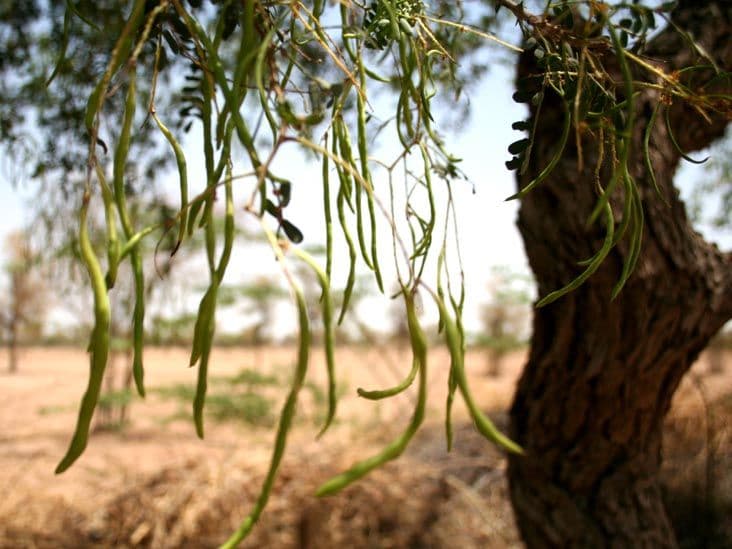

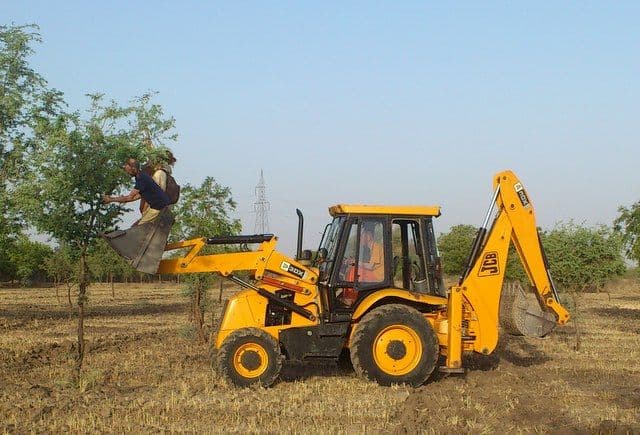

Khejri tree (lat. Prosopis Cineraria) is the state tree of Rajasthan, revered as a holy tree together with banyan and pipal tree. Khejri is also called “The King of Desert” due to its numerous benefits and uses. During Vedic times, khejri wood was used to kindle the sacred fire for performing a yagya. In Ramayana it is mentioned that god Rama worshipped khejri tree as the symbol of the goddess of power before leading the army to kill Ravana. Mahabharata describes that Pandava brothers also worshipped and hid their weapons in khejri tree after 12 years in exile and before going in hiding for one year. Thanks to its roots that go up to 30m in depth, this evergreen thorny tree reaches deep water resources and can survive harsh climate conditions in Rajasthani desert: temperatures rising up to 50°C during summer and falling to 0°C in winter. Although ayurveda considers it valuable for its healing properties, perhaps the greatest value of khejri tree is in its agricultural compatibility - it has nitrogen fixing properties, enriches the soil fertility and boosts the productivity of crops and other plants. Because of the deep roots it does not compete with neighbour plants for water. Here in Rajasthan arid areas that makes a huge difference and impact.
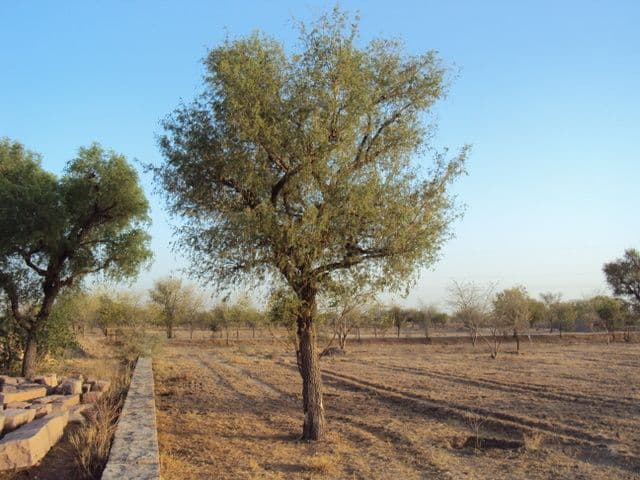

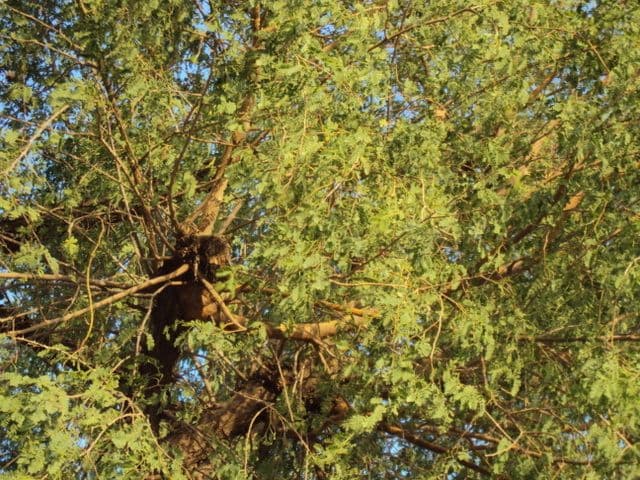
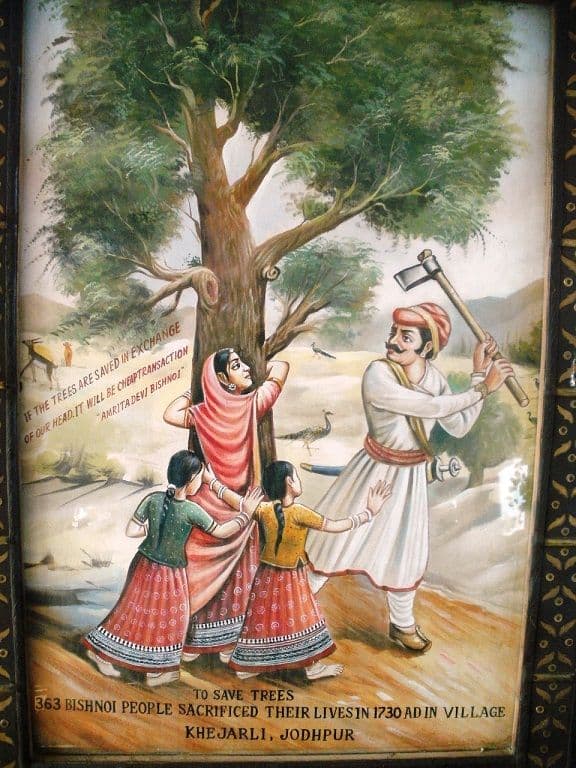
Khejri tree is protected not only for its multi purpose value but also in acknowledgement of the great sacrifice of Bishnoi people. Bishnoi community in India was established in 15th century on the teachings of Guru Jambheshwar or Jambhoji who prescribed 29 principles to follow in life. These principles greatly emphasise the protection of the environment and wildlife. Bishnoi people regard trees as holy and never cut off a green tree. Rajasthani history remembers great sacrifice of the Bishnoi community in 1730 in the village of Khejarli where 363 women, children and men died embracing khejri trees in an attempt to protect them from being cut. (Learn more about Bishnoi community here.)
Horses in the Summer Residence
Horses are enjoying their new summer residence: instead in stables, they spend the night in the open air at the fenced area near the eating veranda. This gives them more fresh breeze as well as freedom to move around. We also enjoy observing 'the girls' playing during our meals. Except for Mehendi, who is an Arabian horse breed, all our horses are typical Marwari breed characterised by the specific inward curving ears.
All our ashram horses seem to get born on auspicious occasions: the youngest Sangam was born on Mauni Amawasya - the main bathing day in Maha Kumbha Mela, Trapti and Ridhi came on Ganesh Chaturthi – birthday of lord Ganesha, Siddhi on Pitr Purnima, Divya on Gurupurnima... At the moment there are 9 horses in the ashram's animal shelter - one stallion named Chetan and the 'ladies' Mahima, Tara, Ganga, Mehendi, Ridhi, Siddhi, Trapti and Sangam. They all enjoy a very nice life in the ashram filled with love, care and freedom and in return they are very friendly, gentle, intelligent, playful and joyful. Sometimes they are a bit stubborn too - for example, several mornings, our horse keepers were puzzled to find Ganga and Mehendi together in one stable, when they left each of them in separate stables the night before. How Ganga managed to open the 2 locks on her stable and the 2 locks on Mehendi's stable during the night in order to be near her best friend is still a mystery, but we have to admire her persistence.





